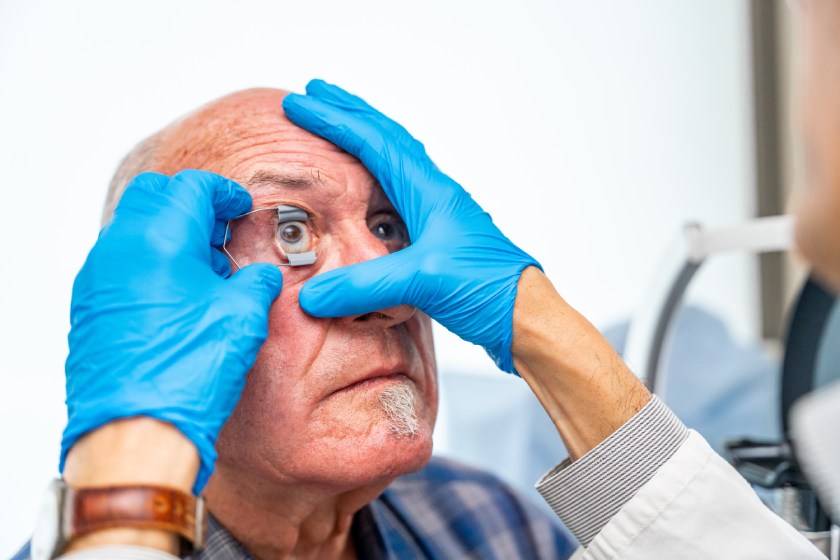Cataract is a common eye condition that affects millions around the world. Some even call it the ‘bread and butter’ of eye and vision care. But wait! Is there just one type of cataract? Or are there multiple types? The short answer is yes; there are many types of cataracts. The long answer? Keep reading for that!
What Is a Cataract?
A cataract is a cloudy area in your eye’s lens. Can you see through a cloud? Well, yes, but not so clearly. Cataracts make your vision blurry and develop rather slowly. Now, they can appear in one or both eyes. So, does that mean they can spread from one eye to the other? The answer is a big NO.
Let’s understand it biologically.
The colored part of your eye is called the iris, and just behind it sits the lens. This lens works like a camera lens in a healthy eye, directing light onto the retina at the back of your eye. But sometimes, a problem arises. A cataract forms, causing the lens to become cloudy instead of clear. Instead of focusing light properly, it scatters it, leading to vision problems.
The lens is mostly made up of proteins and water. Cataracts can develop when changes occur in these proteins and the lens fibers. There are 3 types of cataracts such as nuclear sclerotic cataract, cortical cataract, and posterior subscapular cataract with each having its own origin, and cataract eye surgery is the only method to treat cataracts, however, you may not need it immediately.
Also Read – 5 Common Eye Conditions: Causes, Symptoms, and Treatments
Types of Cataracts Based on Location and Their Causes
All cataracts change the lens. However, the type of cataract depends on its location. Here’s an overview!
1. Nuclear Sclerotic Cataract
This type is the one that most people may be talking about. It is age-related and results in a gradual yellow cloudiness. Moreover, the nuclear cataract forms right in the middle of your lens, called the nucleus and hardens it.
In some cases, patients experience “second sight.” This is a temporary stage during which near vision improves before severe deterioration.
2. Cortical Cataract
As the name suggests, cortical cataract affects your lens’s cortex, which is your lens’s outer part. And how does it look? Like the spokes of a wheel that curves inward towards the center of the lens. When light hits these spoke-like areas, it scatters rather than passes through clearly.
A cataract of this kind generally appears whitish. And one of the reasons why it may occur is your diabetes.
3. Posterior Subcapsular Cataract
The word ‘posterior’ means’ further back in position.’ Can you guess the location of this cataract type? If your answer was the back of the lens, you are right! This cataract develops on the back surface of the lens and usually affects one eye more than the other.
Moreover, it makes your eyes sensitive to light, blurs your near vision, and creates glares and halos around light. And who is it more common in? Individuals who have diabetes or have been on steroids for a long time now.
Also Read – 5 Eye Health Tips Essential for Optimal Vision
Cataract Types by Origin
We have discussed the types of cataracts by location. Doctors also differentiate between cataracts based on their origin. And here’s what the differentiation looks like:
- Age-related: Such cataracts show early signs around your 40s and 50s but do not become very prominent until late 60s.
- Secondary cataracts develop as complications of other eye conditions or medical treatments. For instance, after glaucoma surgery or retinal surgery. Individuals with diabetes may also develop cataracts earlier.
- Traumatic Cataracts: These develop because of direct injury or trauma to the eye. Furthermore, they may develop immediately or years after the event.
- Congenital Cataract: Such cataracts are present at birth. They can be caused by genetic factors, maternal infections during pregnancy, or certain medical conditions such as diabetes.
- Radiation Cataract: This one is a rare kind. It forms after radiation exposure. For instance, UV rays from the sun.
Treatment Options
Cataract Surgery is the only way to treat cataracts, but if you’re diagnosed, it doesn’t always mean you need surgery immediately. Some people can live with mild cataracts for a long time. However, if your cataract makes it hard to see, there’s no point in waiting for surgery.
Also Read – Understanding the LASIK Procedure: What to Expect Before, During, and After
Conclusion
If you have blurry vision, you must get it checked by the best eye hospital near you. While cataracts in the mild form do not do much harm, once they advance, the risks are severe. Moreover, there are other eye concerns that blur vision as well. The only way to ensure safety is by screening!
At Shree Ramkrishna Netralaya, we offer the best in class and technology-enabled eye treatments. If you are looking for a partner to help you correct your vision-related concerns, look no further than us. We are here to serve you in the best way we can. Contact us now!

